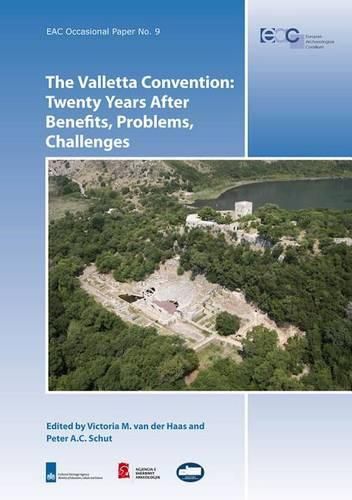Readings Newsletter
Become a Readings Member to make your shopping experience even easier.
Sign in or sign up for free!
You’re not far away from qualifying for FREE standard shipping within Australia
You’ve qualified for FREE standard shipping within Australia
The cart is loading…






The Valletta Convention (1992) was the result of a process which started with the Convention of London (1969) where the foundation for contemporary archaeological preservation was laid. The inclusion of archaeology in the process of spatial planning was one of the most important milestones. In most European countries it meant a strong growth of archaeological research, including the emergence of commercial archaeology, while also in situ conservation received increasing attention. However, the close interaction between archaeology and spatial planning also meant a risk. Over the past few years it has not been easy for archaeological research due to the recession. The youngest generation of archaeologists can hardly comprehend what archaeology was like before 1992. Now, in 2014, we can say that Valletta has become visible in all parts of archaeology. Not only are new residential quarters, industrial and infrastructural works archaeologically investigated, also within the field of public information and cultural tourism there are important achievements. The implications for education are great. Although the main focus within archaeological training lies in scientific research, there is a visible expansion of training for policy archaeologists. In this publication the main topics are addressed. Not only the successes, but also the challenges and possible solutions will be addressed. Due to articles written by experts from different parts of Europe, this publication provides the reader with a good view of the state of affairs in various countries.
$9.00 standard shipping within Australia
FREE standard shipping within Australia for orders over $100.00
Express & International shipping calculated at checkout
The Valletta Convention (1992) was the result of a process which started with the Convention of London (1969) where the foundation for contemporary archaeological preservation was laid. The inclusion of archaeology in the process of spatial planning was one of the most important milestones. In most European countries it meant a strong growth of archaeological research, including the emergence of commercial archaeology, while also in situ conservation received increasing attention. However, the close interaction between archaeology and spatial planning also meant a risk. Over the past few years it has not been easy for archaeological research due to the recession. The youngest generation of archaeologists can hardly comprehend what archaeology was like before 1992. Now, in 2014, we can say that Valletta has become visible in all parts of archaeology. Not only are new residential quarters, industrial and infrastructural works archaeologically investigated, also within the field of public information and cultural tourism there are important achievements. The implications for education are great. Although the main focus within archaeological training lies in scientific research, there is a visible expansion of training for policy archaeologists. In this publication the main topics are addressed. Not only the successes, but also the challenges and possible solutions will be addressed. Due to articles written by experts from different parts of Europe, this publication provides the reader with a good view of the state of affairs in various countries.